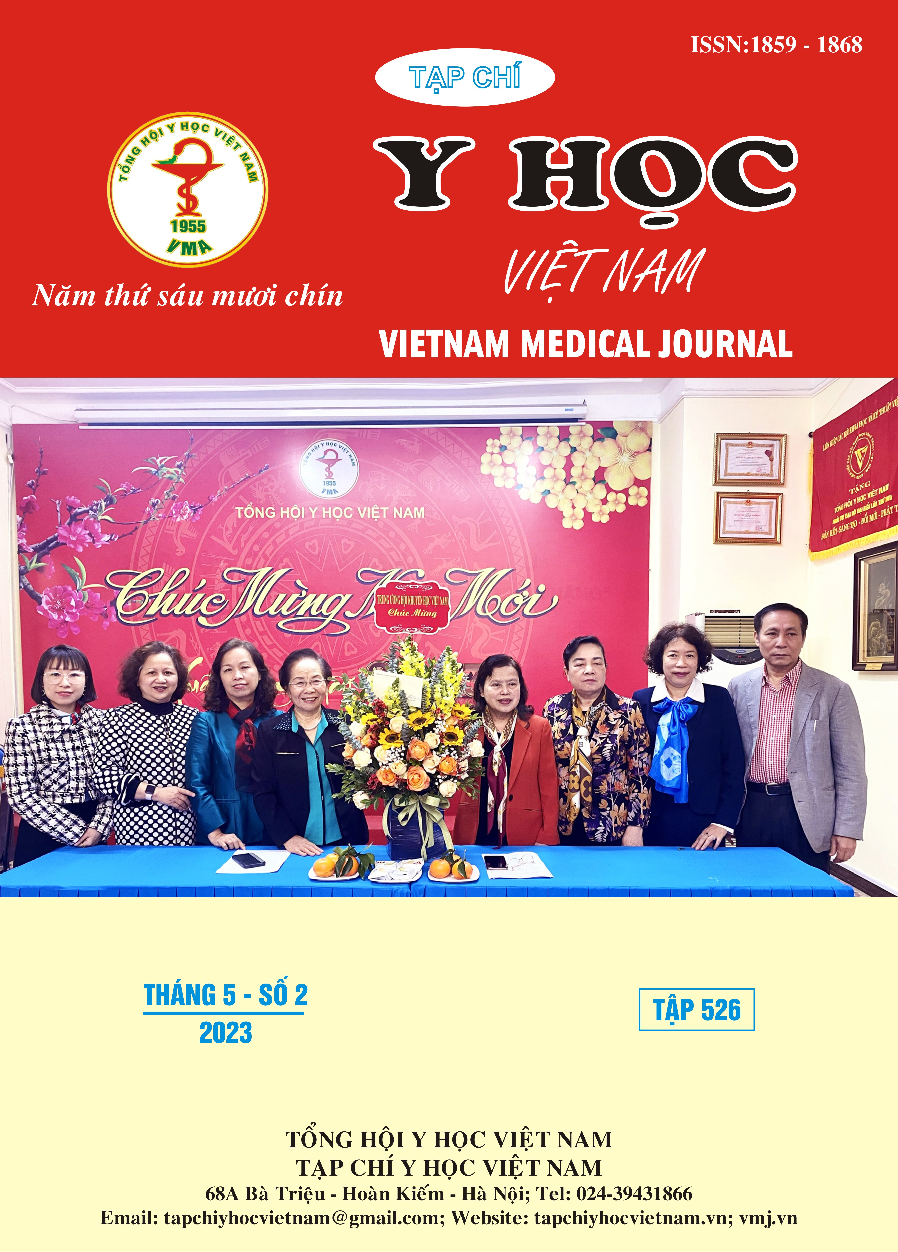VERIFICATION OF EXPERIMENTAL MODELS CONDUCTING DIARRHEA IN MICE
Main Article Content
Abstract
Objectives: In order to verify, re-evaluate the standards, research, and develop appropriate mice models of diarrhea models before conducting a survey on the effects of drugs, we chose the “kho than ta ha – KHTH” model according to the traditional medicine theory and the “antibiotic-associated diarrhea – AAD” model according to the modern medical theory to put into this research. Methods: In the two models, mice were divided into pathological control groups using rhubarb or senna extracts (the KHTH model), streptomycin and lincomycin (the AAD model) with different doses for 5 consecutive days, and the physiological group using distilled water. The image of mouse feces on blotting paper was used to determine the severity of diarrhea (normal, moderate, or severe). The model selection criteria included diarrhea rate (100%), mortality rate (<50%), and self-healing time (>48 hours). Results: In the KHTH model, the diarrhea time of mice was proportional to the dose of rhubarb or senna; however, there was no prolonged diarrhea, and 100% of the mice recovered after 24 hours of follow-up. In the AAD model, there was no similarity in antibiotic dose that caused the 100% diarrhea rate. The dose-adjusted oral antibiotic mice model (30 mg streptomycin + 40 mg lincomycin/10 g mouse) administered continuously for 3 days, followed by a 1% maintenance dose, met the criteria for selecting a diarrhea model. Conclusion: The AAD model in mice was verified and selected as follows: streptomycin 30 mg and lincomycin 40 mg/10 g mice for 3 days, maintaining 1% for 5 days.
Article Details
Keywords
verification, experimental model, diarrhea.
References
2. D'Souza, A. L., Rajkumar, C., Cooke, J., & Bulpitt, C. J. (2002). Probiotics in prevention of antibiotic associated diarrhoea: meta-analysis. BMJ (Clinical research ed.), 324(7350), 1361.
3. Lâm Hồng Tường (1999). Động vật thực nghiệm và xây dựng mô hình bệnh chứng đông y. NXB Y học, tr. 88-93.
4. Nguyễn Văn Thanh, Huỳnh Thị Ngọc Lan, Trần Cát Đông, Võ Thị Mai (2002). Nghiên cứu phối hợp bifidobacterium bifidum và lactobacillus acidophilus để sản xuất chế phẩm trị loạn khuẩn đường ruột. Đề tài khoa học cấp bộ, TP. Hồ Chí Minh, tr 5-7.
5. Viện dược liệu (2005). Phương pháp nghiên cứu tác dụng của thuốc từ dược thảo. NXB Khoa học và kỹ thuật, tr. 220-229.
6. Kamgang, R., Pouokam, K. E., Fonkoua, M. C., Penlap, N. B., & Biwolé, S. M. (2005). Shigella dysenteriae type 1-induced diarrhea in rats. Japanese journal of infectious diseases, 58(6), 335–337.


